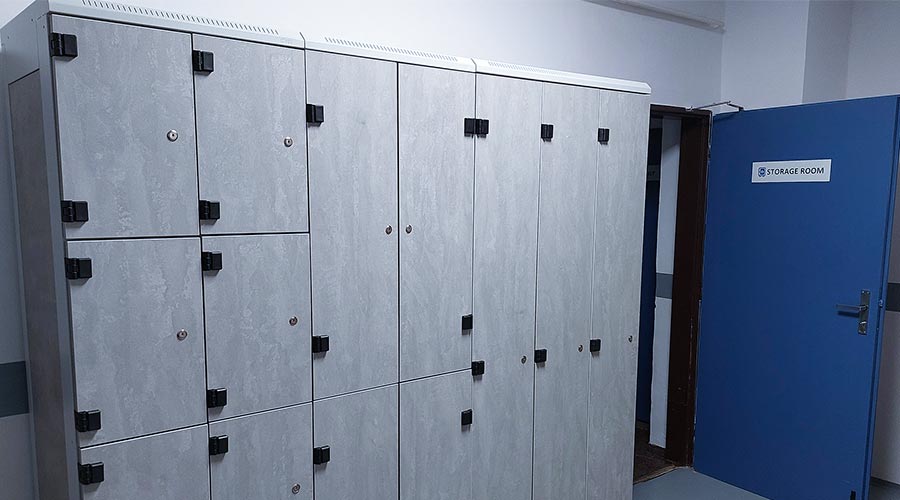In the previous part of our instructions on DNS records setting we discussed the domain orders and how DNS records work. This time, we are already going to talk about the setting of various DNS record types and reverse DNS records, which already relate to our services as well.
DNS setting for your domain
A DNS record is a critical component of every domain. A domain name without this record would be completely useless as it could not be translated to a corresponding server’s IP address. It also becomes clear that it is quite important to configure DNS carefully and without any mistakes – an incorrect setting may paralyse your domain, making your server inaccessible. Nor should you forget that the propagation (spreading) of new or modified DNS records among all the DNS servers across the world may take up to 24 hours. 24 hours, during which your server may not be accessible from some locations.
Every domain may feature various DNS record types. Let us mention the most important ones. You will always find specific instructions for their creation in Customer administration help on your domain registrar’s website.
A – Address record
The A type record is the main DNS record of every domain. It defines the server’s IP (v4) address, to which a domain name is to be translated. The A record of the coolhousing.net domain is IP address 87.236.192.14. The A record of your domain will be the IP address of your server hosted by Coolhousing.
AAAA – IPv6 Address record
AAAA is the IPv6 equivalent of an A record. It is not necessary for the server’s operation itself; however, it is necessary for its accessibility through the more modern IPv6 protocol. The AAAA record of the coolhousing.net domain is IPv6 address 2a01:05f0:0002:0007:0000:0000:0000:0002.
You may create both A and AAAA records for a separate domain (coolhousing.net), any number of third-order and lower-order domains (e.g. www.coolhousing.net, server.coolhousing.net nejlepší.housing.ma.coolhousing.net apod.) or collectively for any third-order domain in the *.coolhousing.net form. If you create DNS records for specific third-order domains (www.coolhousing.net for IP address, e.g. 1.1.1.1) also with a generic symbol (*.coolhousing.net for IP address, e.g. 2.2.2.2), the www inquiries will be correctly directed to server 1.1.1.1, and all the other inquiries to server 2.2.2.2.

02 Summary of a typical domain’s DNS records in the DNS domain registrar’s administration. The domain features both A and AAAA records, MX records, some CNAME records, and TXT records, referencing the Office 365 service. The TXT record features an SPF value.
CNAME – Canonical name record
Another type of DNS record is CNAME, the so-called verbal record (canonical name). It functions similarly to the A or AAAA records; however, instead of IP addresses, it references already existing domain names. If you wish, for example, to re-direct visitors of the coolhousing.cz domain to the coolhousing.net domain, we may set this re-directing right in a CNAME record.
MX – Mail exchanger record
If you wish to use your domain name in e-mail addresses as well (something@yourdomain.cz) and use these boxes for mail receiving and sending, your domain should have its MX record. The MX record is verbal like the CNAME one. It directs you to the domain name of a server, which secures mail services for your domain (mailserver). The MX record for the coolhousing.net domain is the server whose address is mailserver.coolhousing.net.
If you sent your e-mail to info@coolhousing.net, your mail server uses the MX record to identify the aforementioned mail server’s address, to which it delivers, and, using the A record, converts it to the IP address to which it will attempt to deliver your message. If your domain has no MX record and somebody attempted to send their e-mail to it, the sending server should, emphasising the word “should”, try to deliver the e-mail to the IP address identified from the A type domain specified after the e-mail address at-sign.

03 Mail server hMailServer was tasked to identify IP addresses of mail servers featuring info@coolhousing.net boxes.
The use of a single mailserver is considered a risk in some scenarios. If one server becomes inaccessible, we may wish another one to substitute its role. Exactly for this purpose, multiple MX records may be created for a domain. Technically speaking, one may create multiple records of any type; however, priority may only be set for MX and SRV records. Priority is a positive integer. The lower this number is, the more important the given mail server is in the hierarchy of all mail servers of a given domain.
TXT – Text record
The TXT record is often used to enter any message into the domain’s DNS parameters. It is often used, for example, for the verification of domain ownership during domain registration, such as for the Hotmail or Gmail services on the domain itself. Simply expand the TXT record with your text copied from the settings of a service, to which you register your domain. In this way you prove to the operator that your are the domain holder.
SPF – Sender policy framework
E-mail sender identification records, the so-called Sender Policy Framework, used to be entered into TXT DNS records. However, they currently feature their own SPF type. The SPF record is to allow the e-mail receiving server to verify whether the sending server is authorised to send anything from that domain name. Therefore, SPF records help solve the unpleasant situation when spammers use fake source addresses for their unsolicited mail. If you complete the SPF record (or enter it as a TXT record), you will increase the probability of not identifying your mail sent from a given domain as spam.
SRV – Service locator
Service records of some modern services get entered into a specially designated SRV record. You may use it, for example, for the configuration of SIP or XMPP protocols. You enter its value per the used service’s request. Besides priority (smaller number means higher priority), you may also define the weight of the SRV records with the same priority. The SRV record’s target is a domain name, not an IP address.
TTL – Time to live
TTL, or Time To Live, is not a separate DNS record type. It is a parameter of all the DNS record types. It specifies to DNS servers how long to keep the given record in their memories; therefore, after what time they are to query the domain-keeping DNS server about the given record. TTL is specified in seconds.
In the past, the TTL value was most often set to 86,400 seconds; therefore, one day. This is also the reason why the propagation of modified DNS records in the world may take up 24 hours. The current trend is to set shorter TTL, e.g. 14,400 (4 hours). Some registrars set even smaller initial values, e.g. 1,800 (30 minutes).
You may use a higher value for regular operations when you do not plan to modify your DNS records. However, if you wish to significantly modify your DNS records, for example, due to server moving, making TTL shorter sufficiently ahead of the time is recommended (per the actual TTL value) in order to propagate other changes through the world quicker. After your modified TTL propagation, reset your longer time periods. An extremely short TTL not only uselessly increases DNS server workloads, but it also slows down visitor access to your server. The point is that their computers must query DNS servers more often.
Reverse DNS Record
DNS records are used to translate domain names into server IP addresses. Therefore, the reverse DNS records functions in a reverse way: It defines one domain name for your IP address; however, the domain name’s server must be set for type A or AAAA DNS records. Reverse records are called rDNS. Sometimes, you may also read the term “pointer record” (PTR). Reverse DNS records are mostly useful as one of the used methods of spam fighting.

04 A test indicates that the reverse record set for IP address 87.236.192.21 is the mailserver.coolhousing.net server.
Unlike the other DNS record types, you are unable to set a reverse record in the registrar’s domain administration yourself. Reverse records get set on the side of the given server IP address owner, e.g. in our case at Coolhousing. Our customers may set their rDNS directly in the Control Panel customer interface, or they may request our setting assistance.
You may learn more about rDNS records setting in a separate article – https://www.coolhousing.net/en/dns-reverse-entry.
Author: Jirka Dvořák




